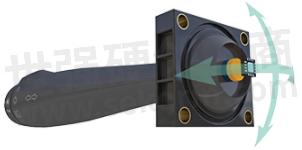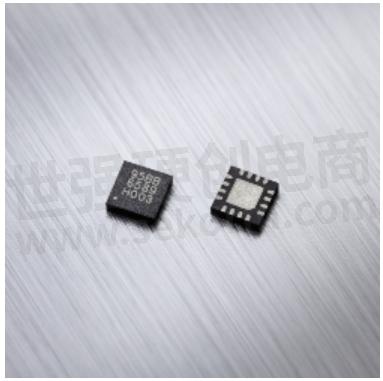Melexis Introduces Automotive-grade 3D Hall Effect Sensor for Automotive and Industrial Applications

JUN 19, 2020 - Melexis announces the MLX90395 Triaxis® Magnetometer Node, an automotive-grade (AEC-Q100) monolithic sensor that uses the Hall effect to provide contactless sensing in three dimensions. The dual-die version of the MLX90395 provides redundancy for demanding scenarios, such as gear lever position sensing in automotive applications.

The functionality of the MLX90395 is defined through the system processor, rather than hardwired into the device itself. In terms of its applicability to position sensing, it has practically unlimited scope.
The MLX90395 offers both I2C and SPI interfaces, making it simple to integrate into an automotive or industrial control environment. Both medium-field (50mT) and high-field (120mT) versions are available in three package options: SOIC-8, TSSOP-16 (dual-die for redundancy) and QFN-16 (with wettable flanks). All package options are qualified to AEC-Q100 covering the extended temperature range for -40℃ to +125℃ and are RoHS compliant.

The selectable digital output provides 16-bit resolution for X, Y and Z magnetic field measurements, enabling the host processor, DSP, microcontroller or digital signal controller to decode the absolute position of any magnet as it passes the sensor.
The MLX90395 is smaller and more power-efficient than alternative Hall effect sensors, thanks in large part to Melexis' Triaxis® technology. This innovative and proprietary technology helps return an industry-low power consumption, with an idle current of 1.4μA and standby current of 2.4μA, and supply current of 4mA or less.
Along with magnetic field sensors to measure three fields (Bx, By, Bz), the MLX90395 also integrates a temperature sensor and supply voltage monitor. Functionally, the sensor features three state machines and operates in one of three modes: single measurement, burst mode and wake-up on change mode. Engineers can select which magnetic field is measured and the frequency of measurement, to further fine-tune the sensor's energy efficiency as well as the filtering and sampling time to optimize noise vs bandwidth.
"The MLX90395 represents a new way of sensing position for the automotive and industrial markets, one that can redefine the way a wide number of applications are designed in HMI, top column, center stack and body control," commented Nick Czarnecki, Global Marketing Manager Position Sensors at Melexis. "Its strengths lie in its high sensitivity and versatility, coupled with its low power and small size. Manufacturers now have access to the very best 3D magnetic node sensing solution qualified to an automotive-grade."
Operational modes can be defined and selected at runtime through the I2C or SPI interfaces, allowing multiple sensors to form part of a sensor cluster, controlled by a single microcontroller. The bus protocol (SPI or I2C) is also selectable, running at up to 10MHz for SPI and 1MHz for I2C. Each sensor is given a unique 48-bit ID number during the manufacturing process and contains additional free space to store customer traceability information.
- 【Datasheet】MLX90395 Triaxis® Magnetometer Node Datasheet
- 【Datasheet】MLX90395 Triaxis® Magnetometer Node
- +1 Like
- Add to Favorites
Recommend
- Melexis Squeezes Ultimate Performance in a Tiny 3D Magnetometer MLX90394
- Melexis Announces an Exclusive License Agreement with Chronoptics to Further Enhance Its Time-of-flight Offering
- Melexis Announces World-first Combined Sensor MLX91805 for Smart Tires
- Melexis Reveals High-accuracy Current Sensors Optimized for Affordable E-mobility
- Melexis Unveils The Next Generation of Its Market-leading Motorcycle Fuel Pump Controller
- Melexis Pushes Back the Boundaries of ToF Technology for Automotive Applications by MLX75027
- Melexis VGA ToF Sensor IC MLX75027 the Full Potential of Automotive 3D ToF Imaging
- Melexis Unveils Arcminaxis™ Position Sensing Technology for Robotic Joints
This document is provided by Sekorm Platform for VIP exclusive service. The copyright is owned by Sekorm. Without authorization, any medias, websites or individual are not allowed to reprint. When authorizing the reprint, the link of www.sekorm.com must be indicated.





























































































































































































































































































































































































































































































































































































































































































































































































































































































